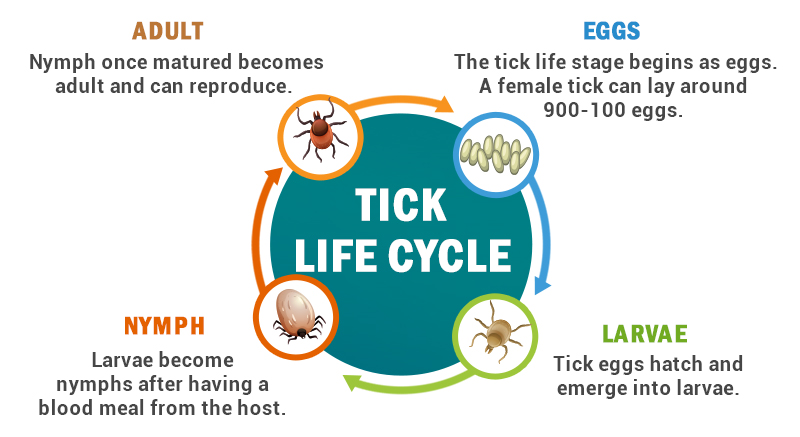
Ticks are one of the most annoying parasites that are present everywhere and can cause problems for your dog throughout the year, actively during the summer season. Dogs love to spend time outdoors and that is when they are more susceptible to getting infested by these parasites. So how do we protect our canines against these bloodsuckers? A great way to ensure the safety of our dogs from ticks is by educating ourselves about them.
Through this blog, we will take you through the different types of ticks that cause problems for dogs and ways to protect dogs from them.
What are ticks?
Ticks are eight-legged parasites that live on your dog’s skin and feed on their blood. They look like spiders with flat, oval-shaped bodies. Ticks create their breeding grounds both indoors as well as outdoors and infest animals, birds and humans. It is imperative to protect your dog from these parasites as they can cause various harmful diseases including Lyme disease, Rocky Mountain spotted fever, etc.

Types of Ticks
Mainly, there are two tick types, hard and soft ticks. Take a look at the comparison of them below.

Common Ticks to Affect Dogs
- American Dog Tick: American dog tick, also known as the wood tick, is commonly found in the east of the Rocky Mountains and some areas of the Pacific Coast especially in woods, grass and bushy areas. Although they are active throughout the year but are at their peak in the spring season. These annoying parasites are usually identified as adult females having large off-white dorsal plates. They can live without food for two years making them the most harmful parasites for your pet. They transmit dangerous diseases like Rocky Mountain spotted fever and Tularemia.
- Black-legged Tick: Also known as the deer tick, the Black-legged tick is commonly found across the eastern United States and just like the name, it has a dark brown dorsal shield with legs that look like armor. They are at their peak in the summer season but after finding a host, they can survive winters. Lyme disease, Anaplasmosis, and Ehrlichiosis are some of the diseases spread by deer ticks.
- Brown Dog Tick: Alternatively known as the Kennel tick, this tick species is found worldwide. It is light brown with hexagonal-shaped mouthparts and a narrow body structure. They do not need a particular season or place to thrive as they breed in every season and make their home in kennels, crates and dog beds. They transmit various diseases like Babesiosis and canine Ehrlichiosis.
- Lone Star Tick: The lone star tick is widely spread throughout the southern and eastern United States in wooded areas, having a reddish-brown color with a white dot on its back. They flourish in the warmer months and transmit Tularemia and Ehrlichiosis.
know More About: 5 Top Treatments to Control Fleas and Ticks
Bottom Line
Now you are equipped with enough understanding of the different types of ticks that cause problems for your canines. It is crucial to protect your dog from these parasites as they carry a variety of harmful diseases. However, there are flea and tick treatments available for dogs to keep them protected against these blood-sucking parasites. Consult your vet for tailored recommendations in terms of protecting your canines from the havoc caused by ticks.







